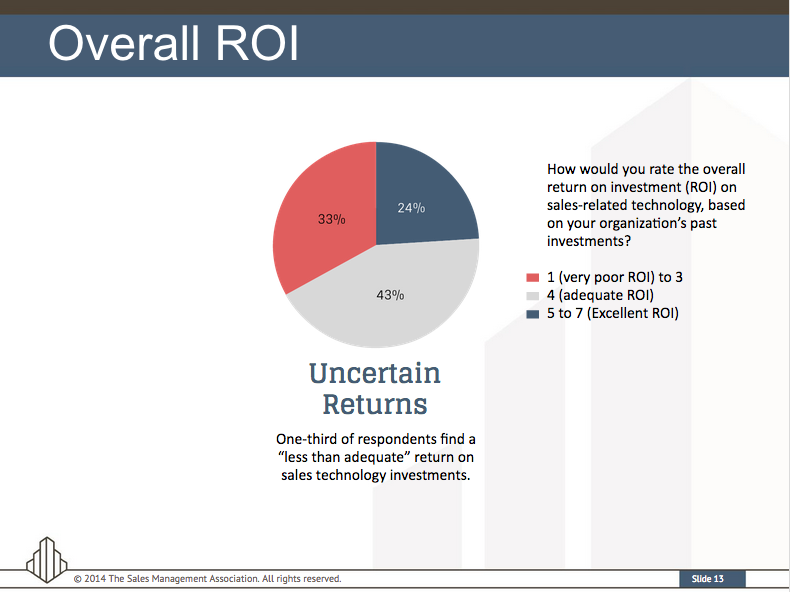Running a sales team takes a great amount of balance between process and technology, especially now that technology is such an integral part of a sales team's tool set. The catch is that less than a third of sales organizations have seen an adequate ROI from their investments in sales technology, even though most companies will prioritize investing in sales technology over the next 18 months.

There are many characteristics that create high-performing sales teams, but the fact that more than half employ a clear, well-defined process to measure effectiveness is telling. Meanwhile, more than 70 percent of organizations we surveyed don't have the ability to measure sales process effectiveness.
Technology can help facilitate process, but often process must inform which technology an organization decides to invest in. With statistics like these, it's easy to see how striking that balance would become a major headache. So, which should be prioritized first: process or technology
Taking the Easy Way Out
Technology can make the business of selling much easier. And many organizations agree: respondents to our 2014 survey with the Sales Management Association said that investing in sales technology to reduce administrative tasks is a top priority for their organizations over the next 18 months. From CRM to presentation software, dozens of companies now offer point solutions for every stage of the sales cycle.
But technology can't take the place of process. In fact, technology without a clear process can be a hindrance rather than a help; poor or incomplete training can lead to sales rep apathy, which in turn leads to fewer reps using the technology. The end result is an absence of sales technology ROI.
Still, the question remains: do you create a process and integrate technology into it, or do you invest in technology, then build a process around it

Where Do You Start
Before you can answer that question and create a plan of action, you must identify what's not working for your organization. Are sales reps consistently missing quotas? Have they adopted and committed to your sales process? Is there a dip in technology adoption? How often do you check in with individual reps—are you regularly communicating with them, and they with you? These preliminary questions will help you determine where to focus your efforts.
Plan to Plan
Once you've determined which concept needs your attention first, you'll need to start pre-planning. If you believe process is the issue, start from the top and work your way down. You need executive buy-in first; if the executive team doesn't commit to seeing process or technology through, neither will your sales team. Next, lay a strong foundation for both process and technology with training: make sure everyone knows exactly how things work.
Finally, keep people accountable and make visibility a priority. Everyone should know when the process changes or when technology is upgraded, as well as who to go to with questions or suggestions on how to improve.
Whether your team needs to address its process or technology issues first, one thing that will never change is the need for communication. Consistent and open dialogue will ensure success, no matter which issue your organization chooses to tackle first.
Join our webcast Wednesday, 17 December at 2 p.m. EST for continued discussion about your challenges and successes related to sales technology and productivity.
About the Author
A career entrepreneur with expertise in building and growing small to medium-sized businesses, David Kerr brings 20+ years of experience in executive management, business development, marketing and sales as TinderBox’s COO. Kerr most recently served as VP and GM of Groupon, guiding strategy, financial planning, investment, and product management and execution for a marketplace channel with $120 million in grossbillings.









